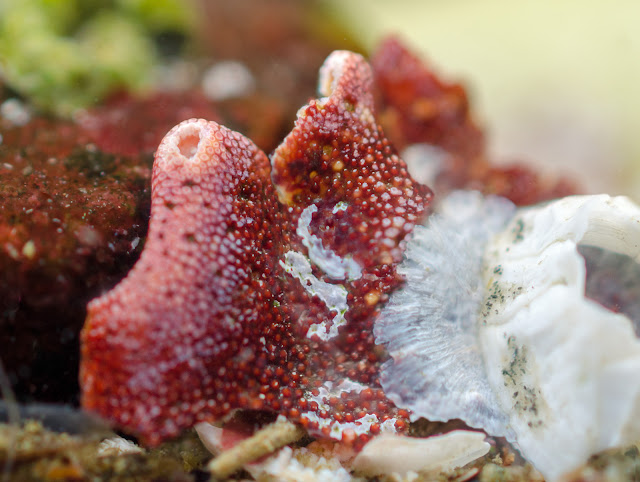I've been watching some of the smaller life in my aquarium.
 |
| Like this female Calanoid copepod carrying her egg sac behind her. |
The copepod is the basic food group for many marine organisms, including my anemones.
Some scientists say they form the largest animal biomass on earth. ... copepods almost certainly contribute far more to the secondary productivity of the world's oceans, and to the global ocean carbon sink than krill, and perhaps more than all other groups of organisms together. (Wikipedia)
In my tank, the copepods are about 1 mm. long, and visible only when the light hits them against a dark background.
 |
| The sand dollar was trying to climb the wall, pushing with the stripy spines until he was almost vertical. But there was nothing to eat on the wall, and he gave up and crawled back into the sand. |
 |
| A tiny piece of broken crab shell, with the remains of a barnacle. |
 |
| When the lined chiton came close to the glass, I was able to see the tiny hairs on its girdle. |
I brought home two stones with big barnacles for the leafy hornmouth snails to eat. Once they were in the tank, the sand that came along with them got up and started to walk about. With a lens, I could see that they are snails, as small as fine sand grains. And in short order, they had all crawled down and merged into the sand on the bottom of the tank.





I had no clue about the biomass of copepods. Wow!
ReplyDelete